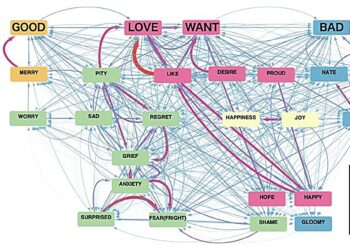
Elephants can feel joy, chimpanzees grief and depression, and dogs happiness and dejection. But do you know which emotion seems to escape 99% of other animals? Although more recent research suggests that other primates like chimps and rhesus monkeys can get flustered during socially awkward situations, embarrassment seems to be a defining human emotion — and so is its physiological response, blushing.
Blushing is weird. Charles Darwin called it “the most peculiar and most human of all expressions”. The reaction is thought to occur when we feel embarrassed or self-conscious, causing blood vessels in the facial skin to dilate. This makes our faces turn red and lets everyone else in on what’s going on inside our heads.
A new study has now revealed a new perspective on this involuntary response that can be both agonizing and bewildering. The findings suggest that the key trigger for blushing may be a heightened sense of self-awareness rather than a concern about others’ opinions.
Inducing embarrassment
“Blushing is a really interesting phenomenon because we still don’t know which cognitive skills are needed for it to occur,” said developmental psychologist Milica Nikolic of the University of Amsterdam. “There’s this idea in psychology that dates back to Darwin, who said that blushing occurs when we think about what other people think of us, which involves relatively complex cognitive skills”.
Researchers at the University of Amsterdam in the Netherlands and the University of Chieti in Italy delved into this phenomenon. They recruited 40 female teenagers and 20-year-olds to participate in the study. Female adolescents are a group known to be particularly sensitive to social judgment.
To induce blushing, the researchers played dirty. They had the participants watch footage of themselves singing karaoke while lying in an MRI machine. But they also upped the stakes. Researchers told the participants that an audience would also watch the karaoke performance alongside them in a different room. Recordings of other participants were also shown, including that of a professional singer disguised as one of the participants.
Researchers found that participants’ cheeks became noticeably hotter when watching themselves compared to watching others, which was to be expected. However, the brain scans were more insightful.
The blushing brain
The functional MRI (fMRI) scans surprisingly revealed that blushing heightened activity in the cerebellum. This brain area is known to be primarily responsible for movement and coordination. There was also activity in brain areas responsible for processing visual stimuli. And this peaked when the participants watched videos of their own singing. Interestingly, regions involved in mentalizing, or considering one’s own or others’ thoughts and behaviors, were notably absent.
“Lately, there has been a lot of research suggesting its involvement in emotional processing,” Nikolic adds
“Based on this we concluded that thinking about others’ thoughts may not be necessary for blushing to occur” Nikolic concludes. “Blushing may be a part of the automatic arousal you feel when you are exposed and there is something that is relevant to the self”.
The study’s results should be interpreted cautiously. The team acknowledges that patterns of brain activity related to complex mental processes like arousal and attention are not entirely distinct. Additionally, the study’s small and homogeneous sample limits its generalizability. Further research with larger, more diverse groups is needed to validate these findings and deepen our understanding of this uniquely human response.
The findings appeared in the Proceedings of the Royal Society B: Biological Sciences.






